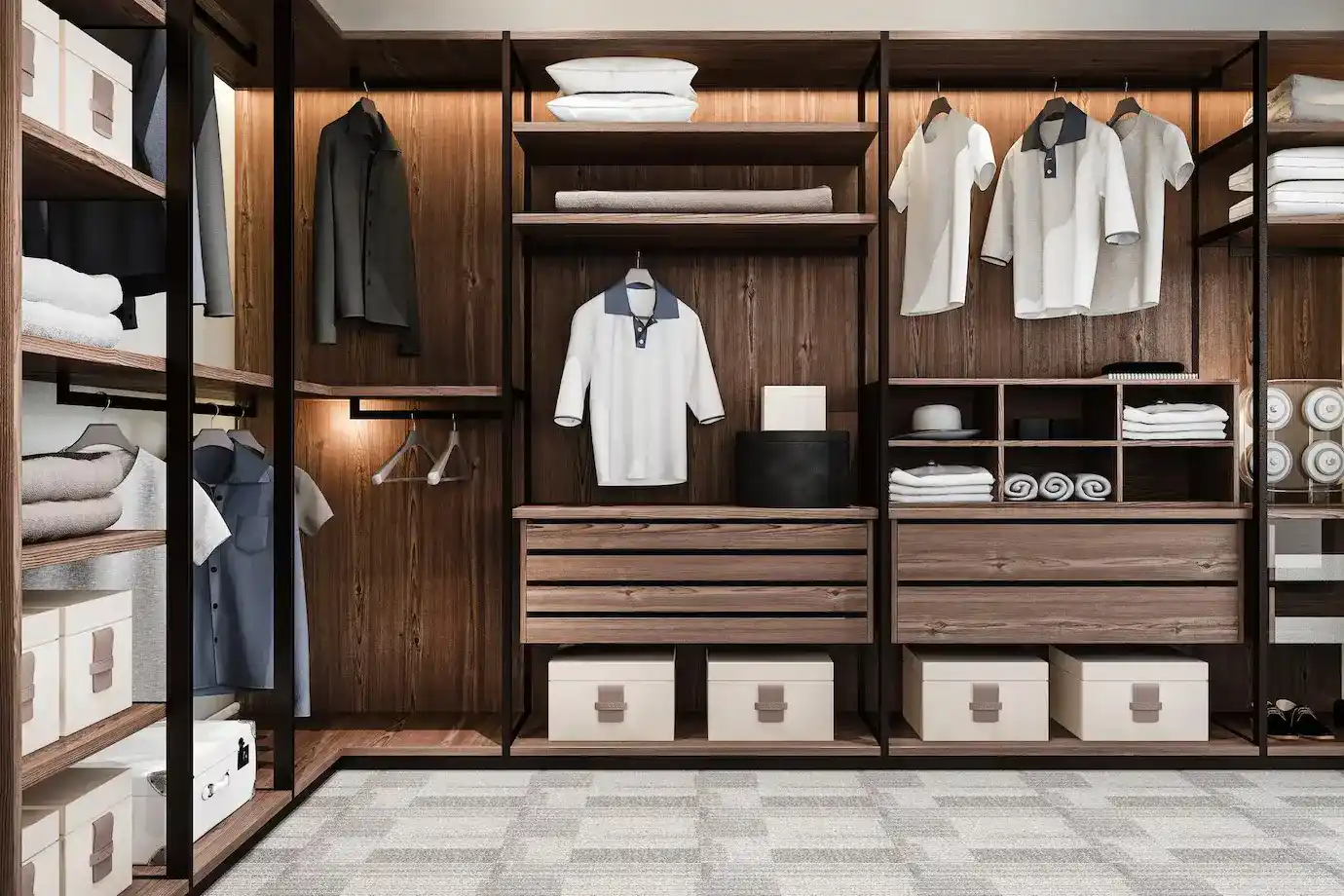Designing a dream closet is more than just organizing clothes and shoes. It’s about creating a personalized haven where you can start your day with a sense of calm and inspiration. Whether you have a small space or a spacious walk-in closet, thoughtful design and functional storage solutions can transform it into your very own wardrobe sanctuary.
Assess Your Needs and Space
Before diving into the design process, take a moment to assess your needs and the space available. Ask yourself:
- How much hanging space do I need for clothes?
- Do I need storage for accessories, shoes, and bags?
- What items do I use most frequently?
- How much space do I have to work with?
Understanding your needs will help you create a functional layout that maximizes your closet’s potential. As Bobby Berk, an interior designer, emphasizes, “Maximize your closet’s potential with thoughtful design and functional storage solutions. It’s about creating a space that works for you.”
Declutter Before You Design
The first step to designing your dream closet is decluttering. It’s essential to start with a clean slate. Go through your clothes, shoes, and accessories, and get rid of anything that no longer fits, is out of style, or you haven’t worn in over a year. As Peter Walsh, a professional organizer, advises, “Declutter before designing. Focus on items you love and use regularly to create a streamlined and organized space.”
I remember when I was setting up my closet, I had a hard time parting with clothes I thought I might wear someday. But once I decluttered, it was easier to visualize the design and functionality I wanted.
Planning the Layout
Hanging Space
Decide how much hanging space you need for different types of clothing. Long hanging space is necessary for dresses and coats, while double hanging rods can maximize space for shirts, blouses, and pants.
Shelving and Drawers
Incorporate shelves and drawers for folded items, accessories, and shoes. Adjustable shelves can provide flexibility as your storage needs change. Consider adding dividers in drawers to keep small items like socks and ties organized.
Shoe Storage
A dedicated shoe storage area can keep your shoes organized and easily accessible. Use clear shoe boxes, racks, or cubbies. For those with a vast collection, rotating shoe racks are a great space-saving solution.
Accessory Storage
Accessories like jewelry, belts, and scarves need their own space. Velvet-lined drawers or jewelry organizers can prevent tangling and damage. Hooks and racks on the inside of closet doors can also be utilized for belts and scarves.
Lighting the Space
Good lighting is crucial in a closet to ensure you can see everything clearly and appreciate the design. Hilary Farr, an interior designer, states, “Adequate lighting is essential for a functional and stylish closet. Consider a mix of ambient, task, and accent lighting.”
Ambient Lighting
Ambient lighting provides overall illumination. Recessed lights or a ceiling fixture can light up the entire space.
Task Lighting
Task lighting focuses on specific areas. LED strips under shelves or inside drawers can illuminate hard-to-see places.
Accent Lighting
Accent lighting adds a touch of luxury. Use it to highlight special pieces or architectural details. A chandelier or stylish pendant light can add a touch of elegance to your closet.
Choosing the Right Materials
Investing in quality materials can make a significant difference in the look and feel of your closet. Nate Berkus, an interior designer, suggests, “Invest in quality materials and finishes to create a luxurious and inviting closet environment.”
Wood
Wood adds warmth and sophistication. Opt for solid wood or high-quality veneers for a timeless look.
Glass
Glass doors and shelves can make the space feel more open and luxurious. Frosted or clear glass can be used to display items while keeping them protected from dust.
Metal
Metal accents, such as handles and rods, can add a modern touch. Choose finishes that complement your overall design theme.
Adding Personal Touches
Your dream closet should reflect your personality and style. Joanna Gaines, an interior designer, says, “A dream closet should be a reflection of your personal style. It’s a space to inspire and empower you.”
Color and Patterns
Don’t be afraid to experiment with colors and patterns. Emily Henderson, an interior designer, encourages, “Don’t be afraid to experiment with color and patterns to add personality to your closet space.” Use wallpaper or paint to add a pop of color to the back of shelves or inside drawers.
Decorative Elements
Incorporate decorative elements like artwork, a rug, or a stylish chair. These touches can make the space feel more inviting and unique.
Personal Mementos
Display personal mementos like photos or souvenirs. These items can make your closet feel more personal and special.
Keeping It Organized
Maintaining an organized closet is essential to keeping it functional and beautiful. Regularly declutter and reorganize as needed. Use organizers and storage solutions that work for you.
Labels
Labeling shelves and drawers can help you stay organized. It also makes it easier to find what you’re looking for quickly.
Seasonal Rotation
Rotate your clothes seasonally. Store out-of-season items in bins or under-bed storage to keep your closet less cluttered.
Expert Tips and Tricks
Incorporating expert advice can take your closet design to the next level.
Multi-Functional Furniture
Use multi-functional furniture to maximize space. A bench with storage can provide seating and a place to store shoes.
Mirrors
Adding mirrors can make a small closet feel larger and brighter. Bobby Berk, an interior designer, suggests, “Consider adding a full-length mirror to the closet door or wall.”
Custom Solutions
Consider custom solutions if you have a unique space or specific needs. Custom closet companies offer personalized designs tailored to your space and style.
Resources and Inspiration
Looking for more inspiration? Check out these resources:
- National Kitchen and Bath Association (NKBA): Offers research on home design trends, including closet design.
- Consumer Reports: Tests and reviews various home products, including storage solutions.
- Interior Design Magazines: Publications like Architectural Digest, Elle Decor, and House Beautiful often feature articles on luxury closet design.
- Custom Closet Companies: Many companies offer design guides and resources to help you create the perfect closet.
Conclusion
Creating your dream closet is an exciting project that can significantly enhance your daily routine. By assessing your needs, planning a functional layout, and incorporating personal touches, you can design a closet that not only looks beautiful but also serves you well. Remember, your closet is a reflection of your personal style, so don’t be afraid to make it uniquely yours. As Joanna Gaines puts it, “A dream closet should be a reflection of your personal style. It’s a space to inspire and empower you.” Happy designing!










